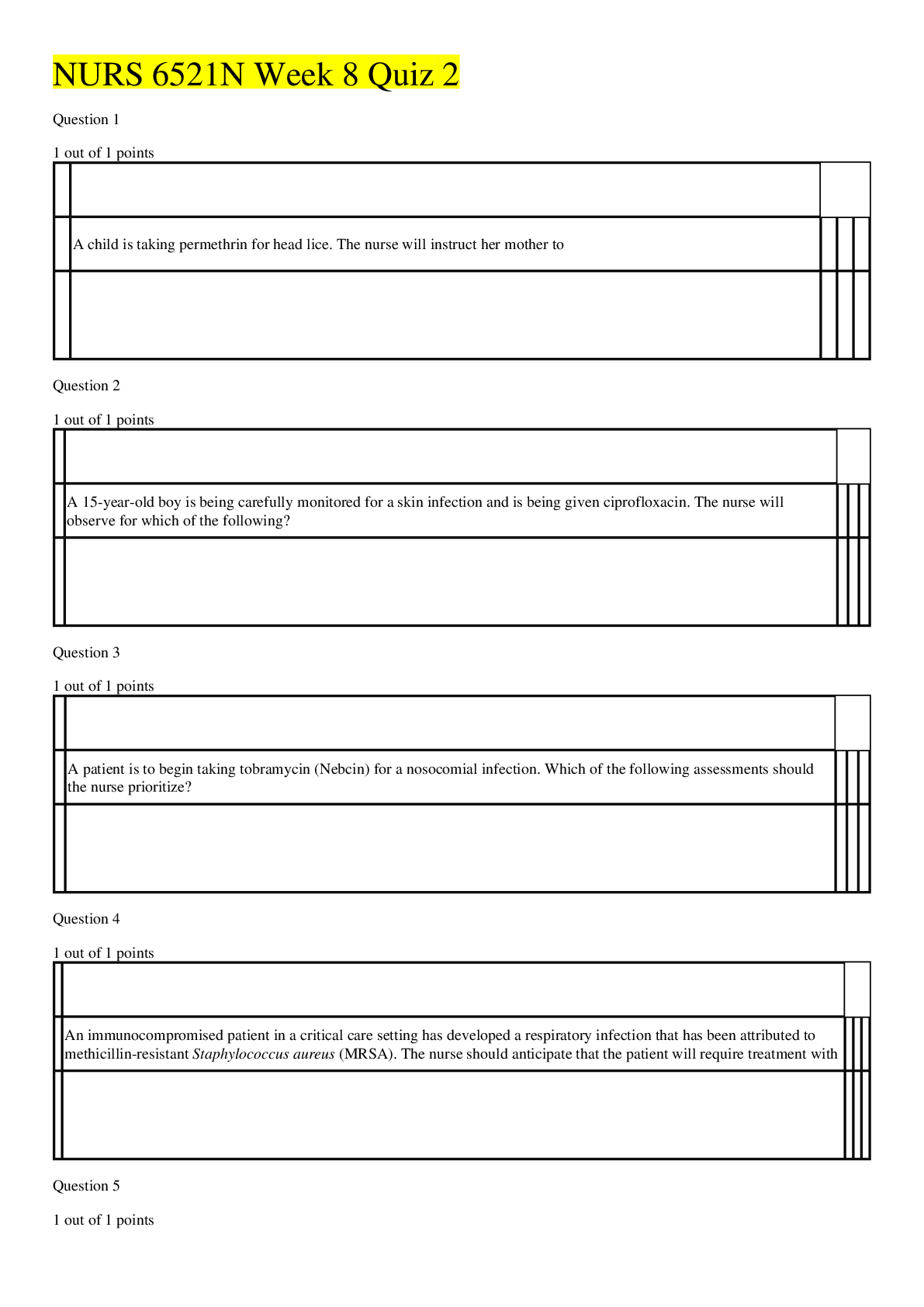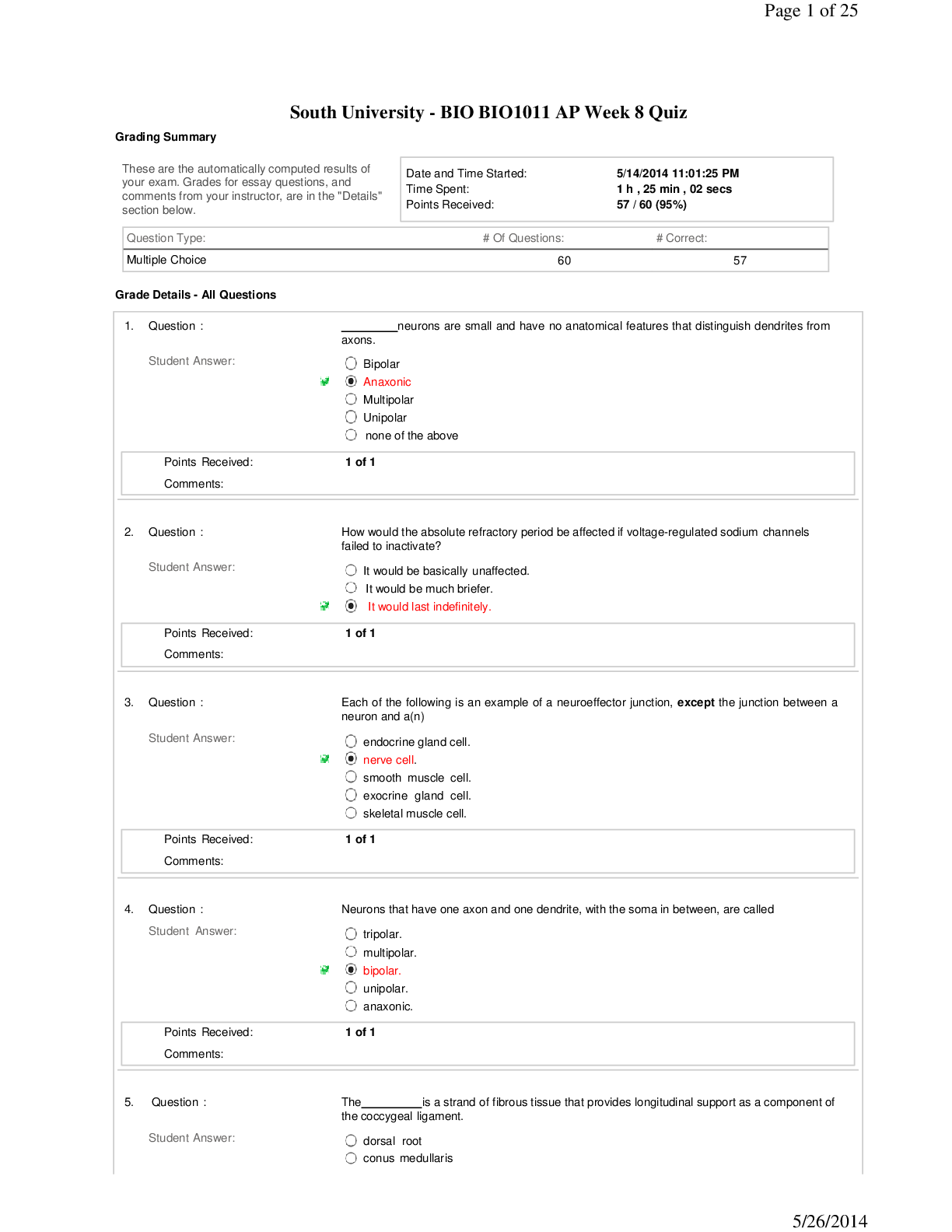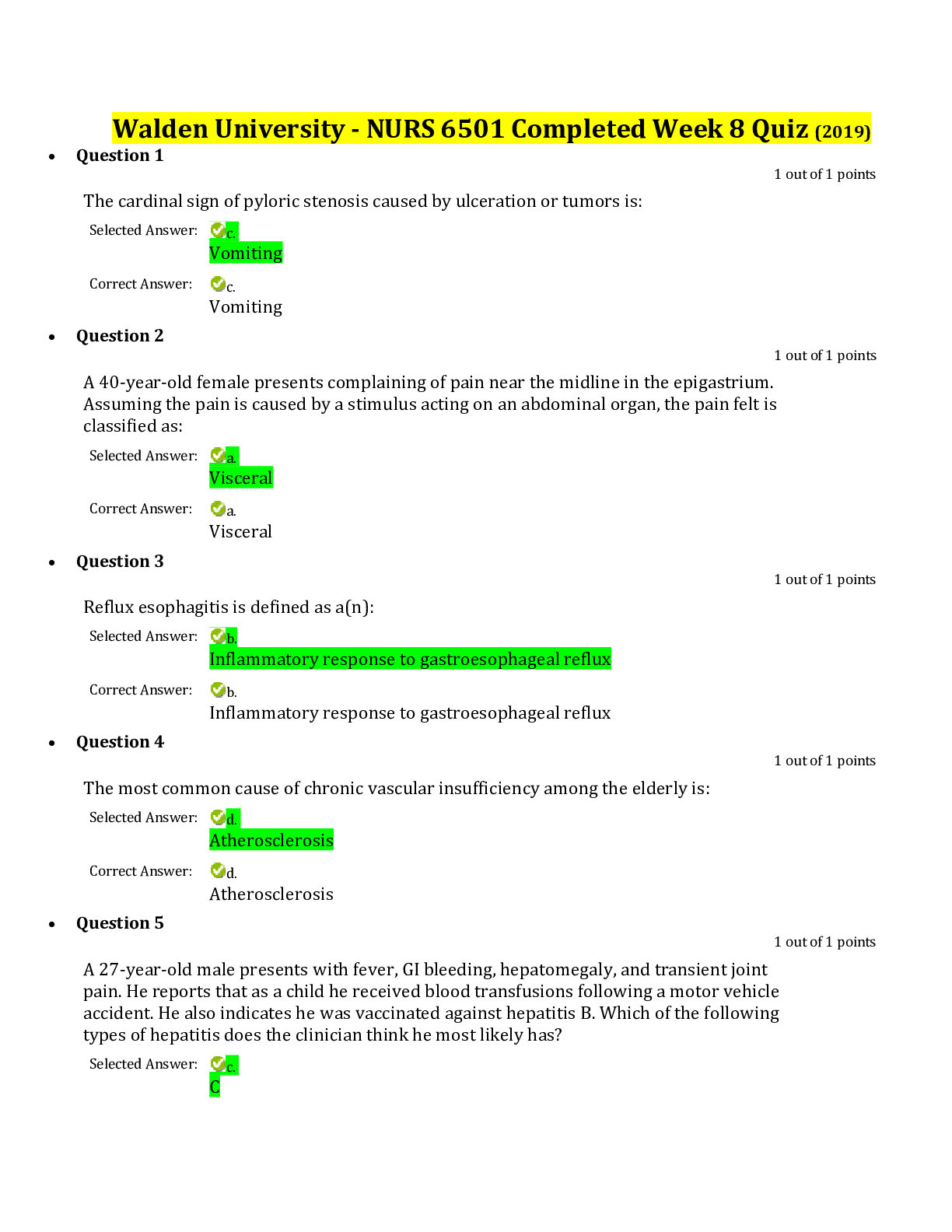NURS 6521N Week 8 Quiz 2.Q&A
Document Content and Description Below
NURS 6521N Week 8 Quiz 2.Q&A • Question 1 1 out of 1 points A child is taking permethrin for head lice. The nurse will instruct her mother to Response Feedback: Using creams, ointments... , or oils may diminish the therapeutic effect of permethrin. Increasing daily milk intake would not enhance the effects of the drug. The patient does not have to wash her hair every day. • Question 2 1 out of 1 points A 15-year-old boy is being carefully monitored for a skin infection and is being given ciprofloxacin. The nurse will observe for which of the following? Response Feedback: A serious adverse reaction of ciprofloxacin is arthropathy, or joint pain, especially in children. This irreversible adverse reaction tends to occur in children under 18 years of age. Colitis is another adverse reaction of ciprofloxacin that the nurse needs to monitor for, but it generally does not affect children under 18 years of age. Hepatitis and hypotension are not identified adverse effects of ciprofloxacin in children or adults. • Question 3 1 out of 1 points A patient is to begin taking tobramycin (Nebcin) for a nosocomial infection. Which of the following assessments should the nurse prioritize? Response Feedback: Peak and trough levels should be closely monitored with serious infections being treated with tobramycin. The patient's blood pressure, diet, weight, and other medications would be important to know and necessary for the plan of care, but are secondary to serum levels. • Question 4 1 out of 1 points An immunocompromised patient in a critical care setting has developed a respiratory infection that has been attributed to methicillin-resistant Staphylococcus aureus (MRSA). The nurse should anticipate that the patient will require treatment with Response Feedback: Vancomycin is the drug of choice to manage infections caused by MRSA. MRSA is resistant to all of the antistaphylococcic penicillins, as well as to ciprofloxacin and clindamycin. • Question 5 1 out of 1 points A 30-year-old African-American woman tested positive for TB and is prescribed isoniazid. The nurse will plan the patient's care to include close monitoring of the drug therapy because Response Feedback: Isoniazid is metabolized in the body through a process called acetylation, which is faster in Eskimos, Asians, and approximately 50% of African Americans or European Americans from North America than in Scandinavians and people of Arab or Jewish heritage. Because the patient is an African American, she may exhibit slow acetylation for the drug, and as a result she may be at greater risk for serum levels and adverse effects. For this reason, the nurse would need to closely monitor this particular patient. Patients of African-American descent do not exhibit slow therapeutic effects of isoniazid or high rates of drug elimination. • Question 6 1 out of 1 points Laboratory testing has confirmed that a patient has chloroquine-resistant malaria and the patient's physician has prescribed quinine along with an adjunctive drug. The nurse should question the physician's order if the patient has a history of Response Feedback: Patients with cardiac arrhythmias may be at risk for developing quinine-induced dysrhythmias and patients treated with quinine have shown prolonged Q-T intervals. Low bone density, diabetes, and COPD are not health problems that preclude the use of quinine in the treatment of chloroquine-resistant malaria. • Question 7 1 out of 1 points A nurse has questioned why a patient's physician has prescribed a narrow-spectrum antibiotic rather than a broad-spectrum drug in the treatment of a patient's infection. Which of the following facts provides the best rationale for the use of narrow-spectrum antibiotics whenever possible? Response Feedback: The benefit of a narrow-spectrum antimicrobial agent is that it limits the potential for adverse effects, such as superinfection. In a superinfection, an antibiotic suppresses all susceptible microbes, including the body's natural flora, which may keep other microbes in check. In the absence of these bacteria, nonsusceptible microbes can proliferate. Narrow-spectrum antibiotics do not lack demonstrated efficacy and they do not necessarily require a shorter duration of treatment. All antimicrobial drugs have the potential to impact subsequent C&S testing. [Show More]
Last updated: 2 years ago
Preview 1 out of 9 pages

Buy this document to get the full access instantly
Instant Download Access after purchase
Buy NowInstant download
We Accept:

Also available in bundle (1)

NURS 6521N Week 1-Week 11 Quiz (Questions and Answers)
NURS 6521N Week 1-Week 11 Quiz (Questions and Answers)
By YourTutor 4 years ago
$80.5
22
Reviews( 0 )
$12.50
Can't find what you want? Try our AI powered Search
Document information
Connected school, study & course
About the document
Uploaded On
Jan 28, 2021
Number of pages
9
Written in
Additional information
This document has been written for:
Uploaded
Jan 28, 2021
Downloads
0
Views
107


























